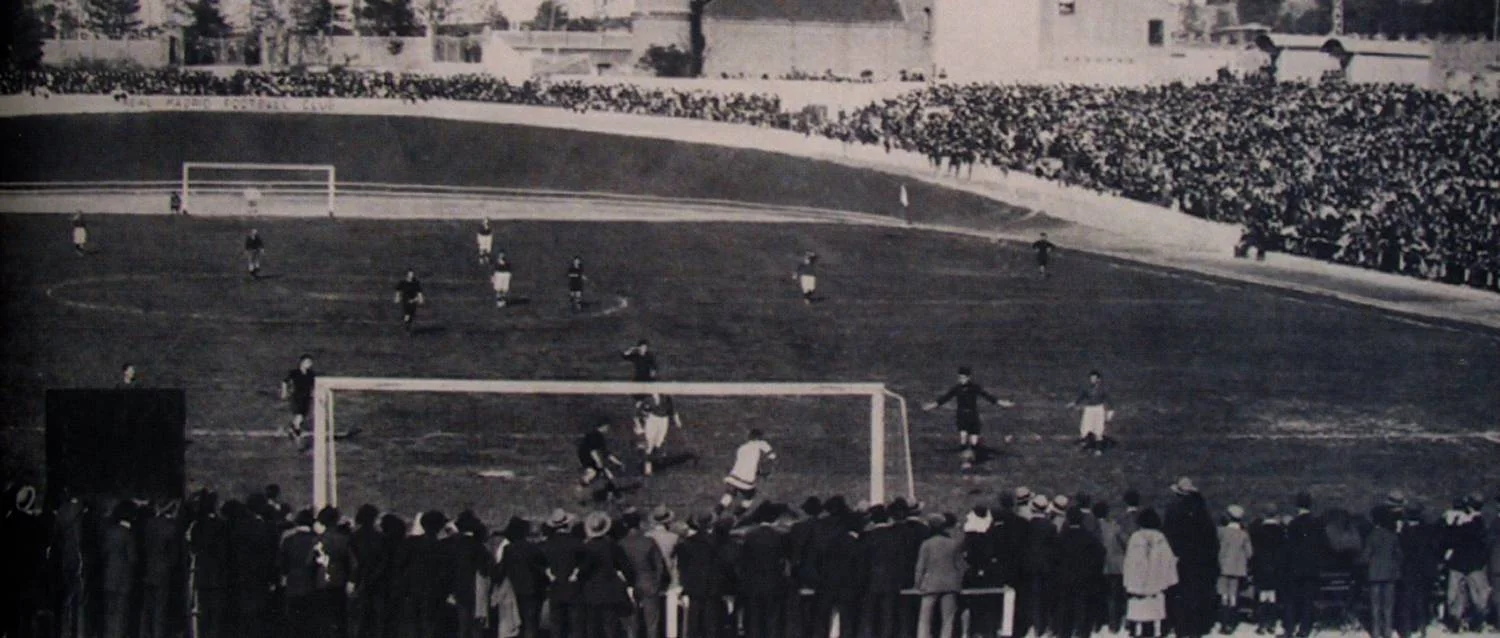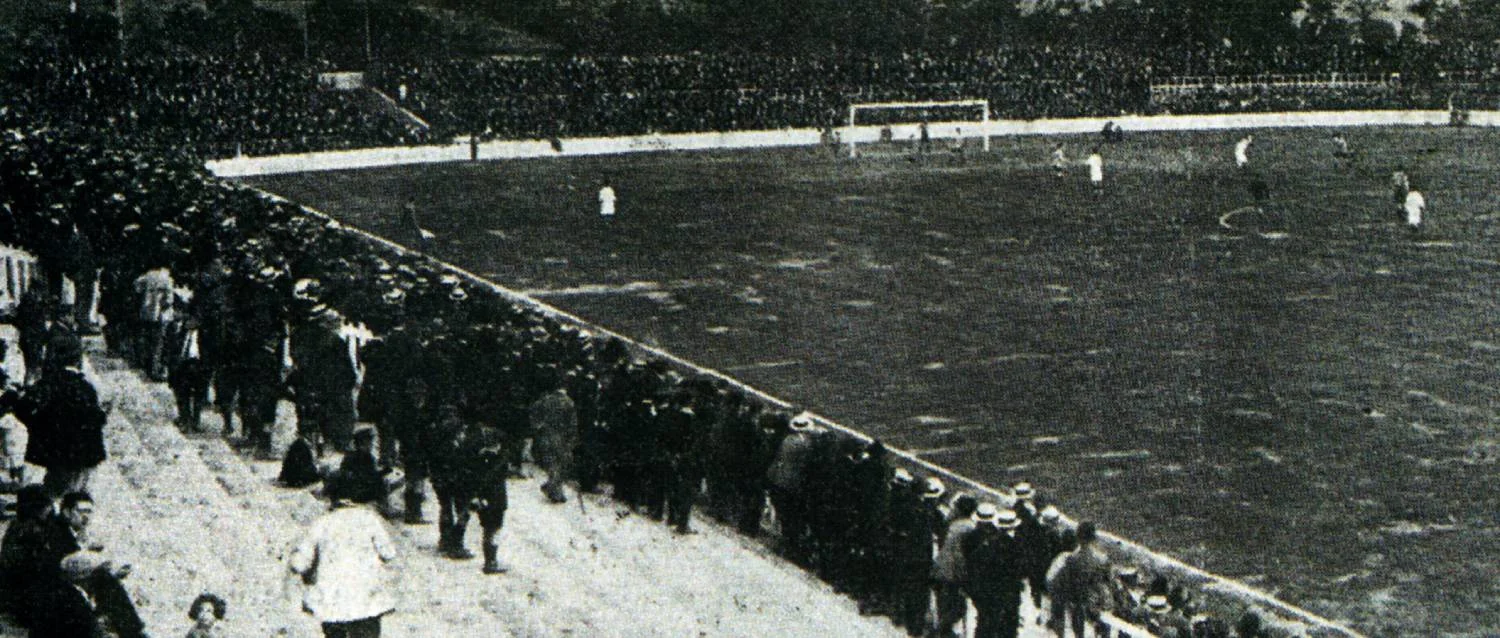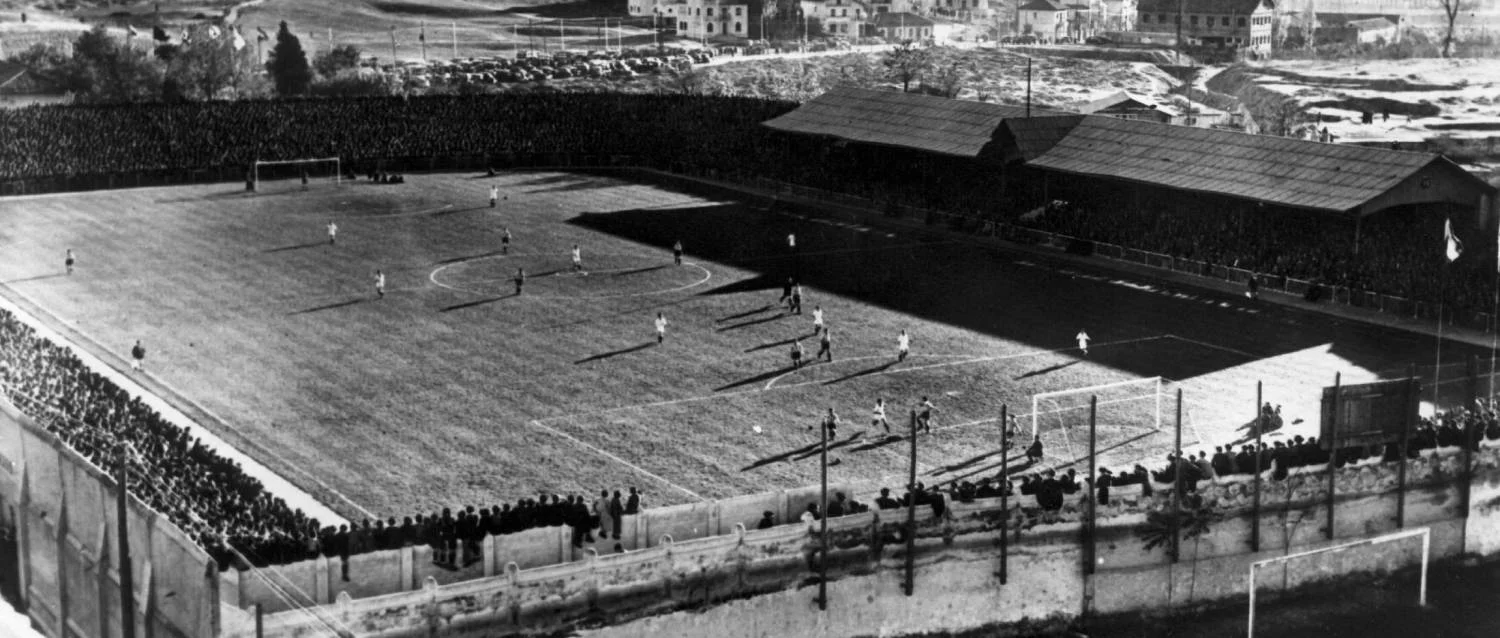The Velodrome and Viejo Chamartín
Inauguration of the Viejo Chamartín Stadium
Match at the Viejo Chamartín Stadium
The sale of the land at O'Donnell to build housing meant that Real Madrid had to look for a new stadium. The Ciudad Lineal Velodrome was adapted to the needs of the time (1923). Arturo Soria, its designer, adapted it for football. The first grass pitch with a capacity for 8,000 spectators. Its spaciousness and comfort were not sufficient arguments given the difficulty of travel. A year later, the white club built Chamartín, abandoning Ciudad Lineal.
After becoming champions of the Central Region in 1923, Real Madrid abandoned the old O'Donnell stadium and decided to take on the great adventure of building a new stadium. A year later, the Viejo Chamartín was born. A historic sports venue, with a capacity for 15,000 spectators. Madrid opened it with a narrow 3-2 victory over the then fearsome English side Newcastle.
This coliseum was the vision of Carlos López-Quesada, a former Madrid player and manager on several occasions. José María Castell was in charge of the direction of the works. His project envisaged the construction of a covered stand with 4,000 seats with all the modern conveniences. There was some controversy over the name. Some wanted it to be called ‘Parque de Sports del Real Madrid’, but the majority preferred ‘Campo del Real Madrid Fútbol Club’. The fans were the ones who called it ‘Chamartín’ and, although it was never official, that name went down in history.


